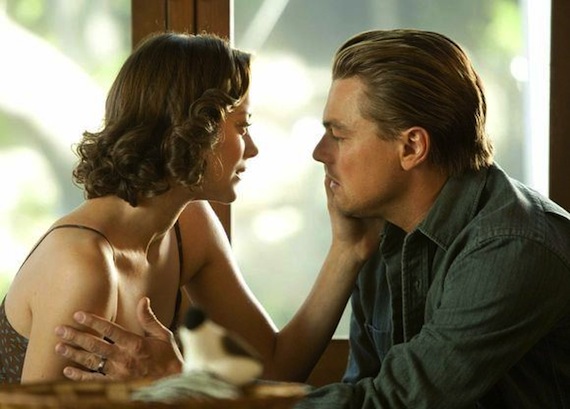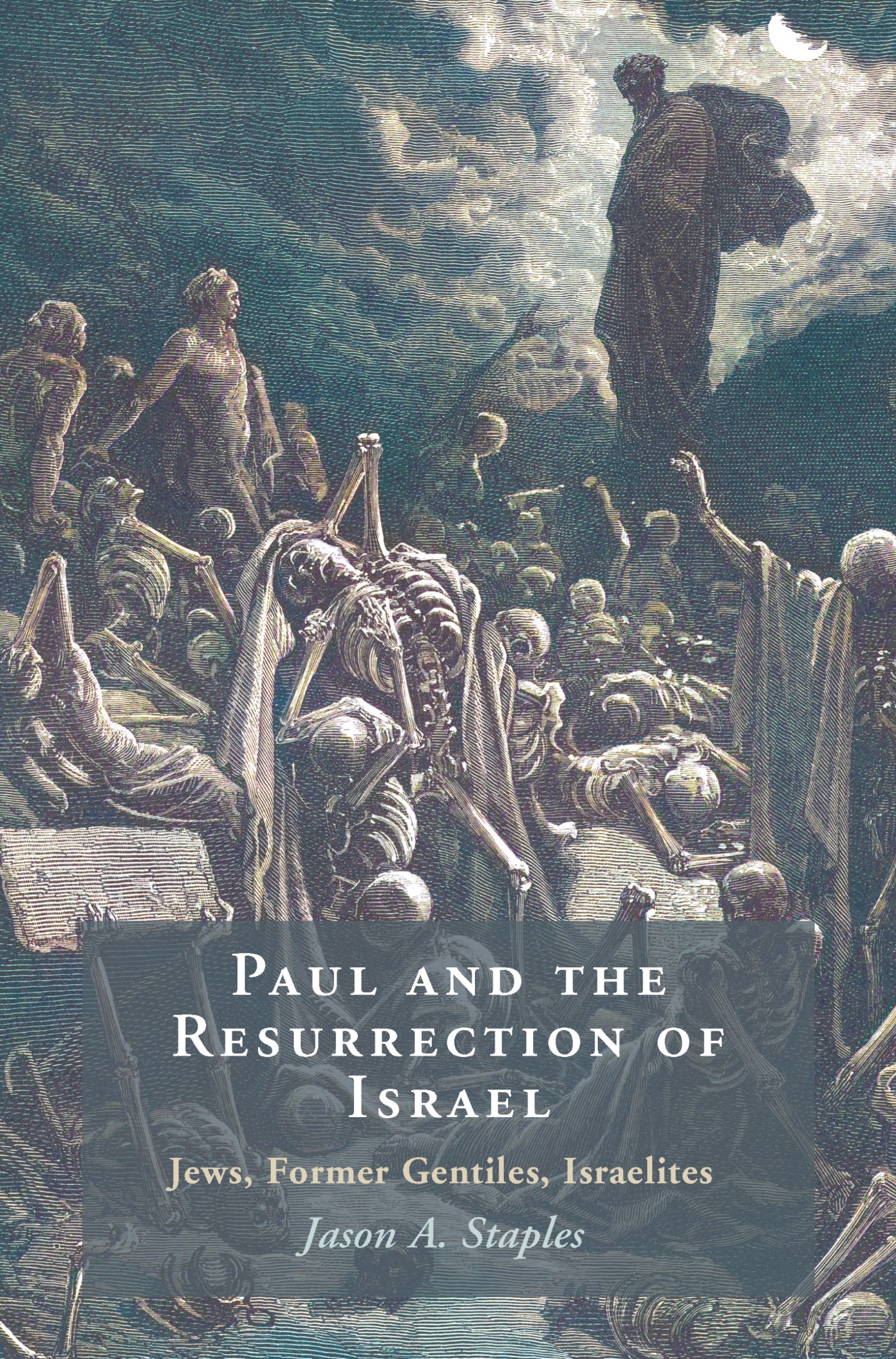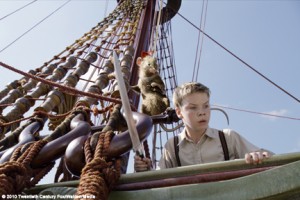I have written previously about Christopher Nolan’s brilliant film, Inception, both in the Journal of Religion and Film and a previous blog post. But I have yet to address yet another key connection between Nolan’s film and the writing of C. S. Lewis (the last several months have been unbelievably busy, leaving a terrific backlog of blog posts I’ve wanted to finish). This particular connection is remarkably strong and strikes me as very unlikely to be coincidental. (Warning: SPOILERS follow for those who haven’t seen the film and would like to do so—which I would highly recommend.)

This connection involves a central plot point: Dom Cobb’s (Leonardo DiCaprio) grief over his dead wife Mal (Marion Cotillard), the image of whom continues to invade his subconscious, endangering Cobb and his comrades as they sink into the depths of their own minds in shared dream states. Wracked by guilt at her passing, Cobb struggles to let go of his wife, desperately trying to hold onto every memory, both treasured and tragic, of the time he shared with his wife. He even constructs his own dream world in which he can visit her—that is, his mind’s image of her—and this in spite of his warnings to Ariadne (Ellen Page) that one should not revisit one’s own memories in a dream state due to the danger involved. The climax of the movie involves Cobb coming face-to-face with the dream image of his wife:
Ariadne: “You can’t stay here to be with her.”
Cobb: “I can’t stay with her anymore because she doesn’t exist.”
Mal: “I’m the only thing you do believe in anymore.”
Cobb: “I wish—I wish more than anything. But I can’t imagine you with all your complexity, all your perfection, all your imperfection. Look at you. You’re just a shade, you’re just a shade of my real wife. And you were the best that I could do, but I’m sorry you’re just not good enough.”
[Mal suddenly stabs Cobb in the heart with the carving knife]: “Does this feel real?” [After an interlude of action, including Ariadne shooting Mal, we return to Cobb and Mal]:Mal: “You can still keep your promise. We can still be together, right here, in the world we built together.”
Cobb: “I miss you more than I can bear, but we had our time together, and I have to let you go. [Resolved, half to himself.] I have to let you go.”
Lewis’ A Grief Observed
As it turns out, this emotional scene borrows heavily from C. S. Lewis’ A Grief Observed, the book in which Lewis records his own process of grieving the death of his wife, Joy, one passage in particular:
Slowly, quietly, like snow-flakes—like the small flakes that come when it is going to snow all night—little flakes of me, my impressions, my selections, are settling down on the image of her. The real shape will be quite hidden in the end. Ten minutes—ten seconds—of the real H. would correct all this. And yet, even if those ten seconds were allowed me, one second later the little flakes would begin to fall again. The rough, sharp, cleansing tang of her otherness is gone.
What pitiable cant to say, ‘She will live forever in my memory!’ Live? That is exactly what she won’t do. You might as well think like the old Egyptians that you can keep the dead by embalming them. Will nothing persuade us that they are gone? What’s left? A corpse, a memory, and (in some versions) a ghost. All mockeries or horrors. Three more ways of spelling the word dead. It was H. I loved. As if I wanted to fall in love with my memory of her, an image in my own mind! It would be a sort of incest.
Lewis bitterly laments the finality of death, most of all the loss of the otherness of his beloved, reflecting upon the fact that his own image of her could never measure up to her real presence, a fading glory that passes away in time and memory. Lewis resolves, wrestles with himself, not to try to keep her alive in his own mind—the very best he could do would be “mockeries or horrors … an image in [his own mind] … a sort of incest.” The shade simply cannot measure up to the real thing, and—as A Grief Observed concludes—we who are alive and remain must be willing to let the dead truly be dead. We cannot keep them alive; we have to let them go.
I am convinced that the correspondence between the film and Lewis’ little book is not coincidental. Nolan himself has stated that it t0ok a long time to find the right “emotional core of the story” that would keep the “heist” framework from being trivial:
When I first pitched the studio the project, it was about ten years ago. I had just finished Insomnia. Really the pitch was the movie you have seen, except I hadn’t yet really figured out the emotional core of the story, and that took me a long time to do. I think I sort of grew into the film in a sense. I had the heist thing. I had the relationship between architecture and dreams; the idea that you would use an architect to design a dream for somebody else and all of that.
All of those things were in place for several years, but it took me a long time to sort of find this idea of emotionally connecting with the story because when I look at heist movies, and I knew I wanted it to feel like a heist movie, they tend to be almost deliberately superficial – they tend to not have high emotional stakes – and what I realized over the years, and the thing I got stuck on, was that doesn’t work when you’re talking about dreams. The whole thing about the human mind and dreams is it has to have emotional consequences and resonances. That was really the process over the years was finding my relationship with the love story, with the tragedy of it, the emotional side.
I suspect that Nolan’s search for the emotional resonances, the emotional side, the tragedy of the story, led to A Grief Observed, which provided the necessary tragic emotional framework for Inception. Nolan does a terrific job of painting a cinematic picture of the process of grief and the relationship between our memories and those we love. It is worth reading A Grief Observed and watching Inception again, noting the extra depth provided by Lewis’ reflections and their impact on the film.




1 Comment. Leave new
Hardly a smoking gun. Lewis’s observation that the grieving person ends up with an image of the beloved made false by the very process of remembering–while beautifully articulated–is almost a cliche of “grief narratives” and grief counseling books. The evolving science of memory also validates this phenomenological description, as we learn that memories are dulled and distorted by every time we fondle and fantasize over them; every time we play the video tape back–rewind it–pause it—slow mo–it gets more warped, more fuzzy, more fragile. And less and less faithful to the thing–or person–it recorded.
I would have been more convinced if Nolan had used the snowflake image, or the incest idea. As it is, what’s common between the two accounts of grief is so universal that “coincidence” is the more likely explanation.